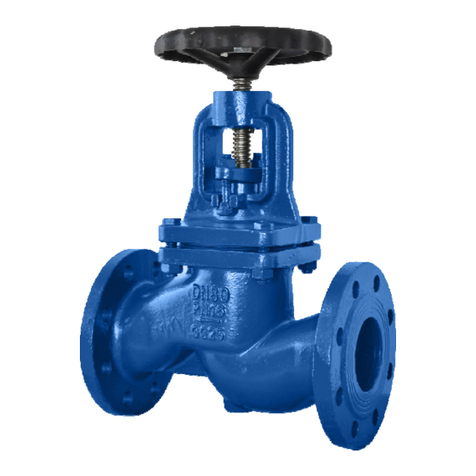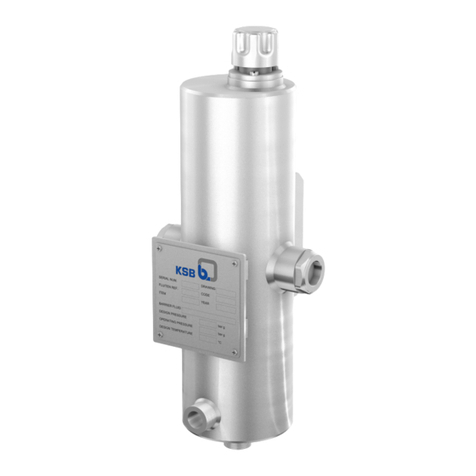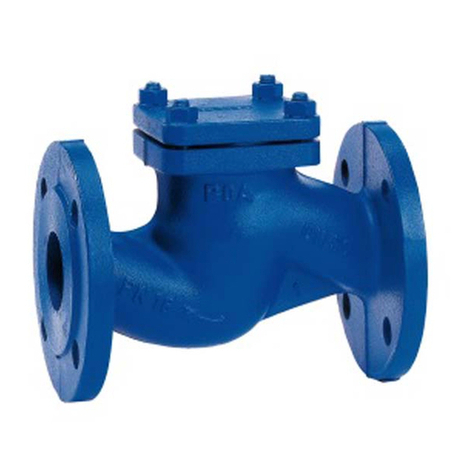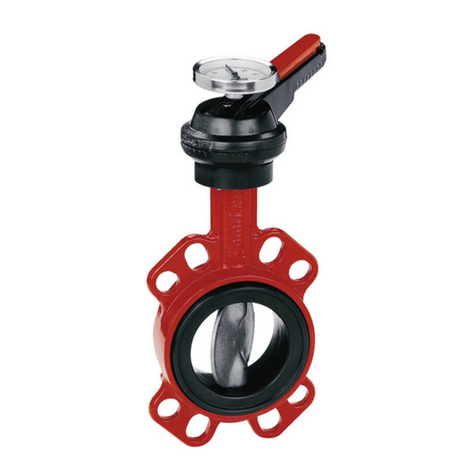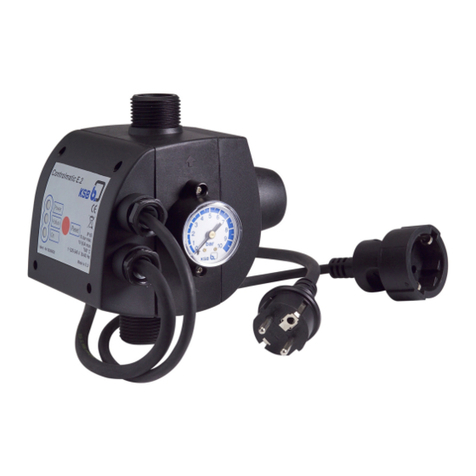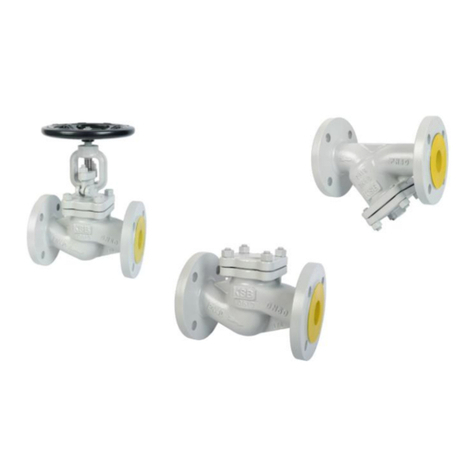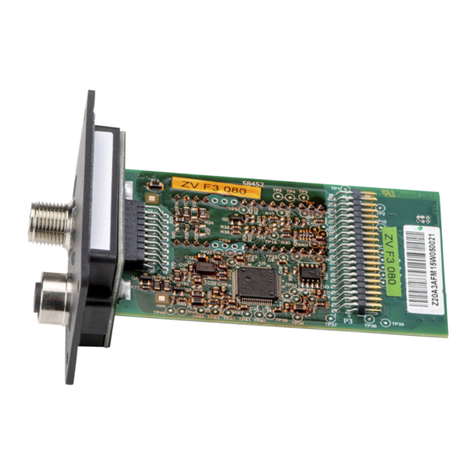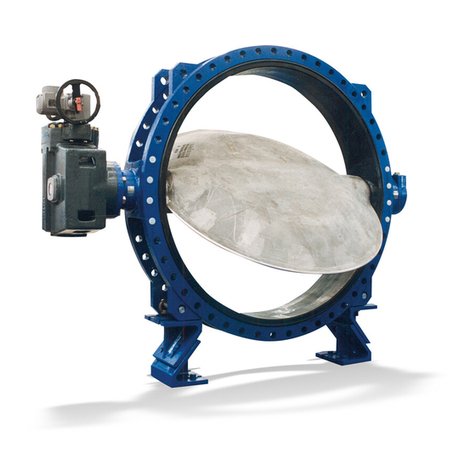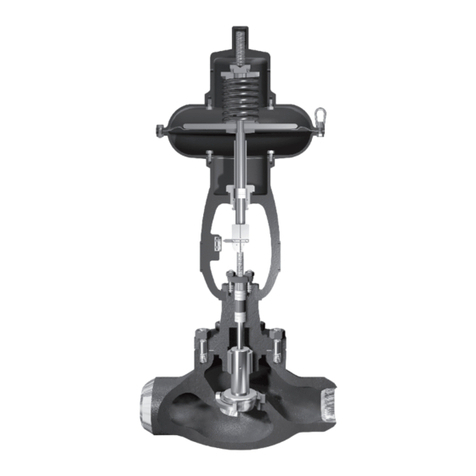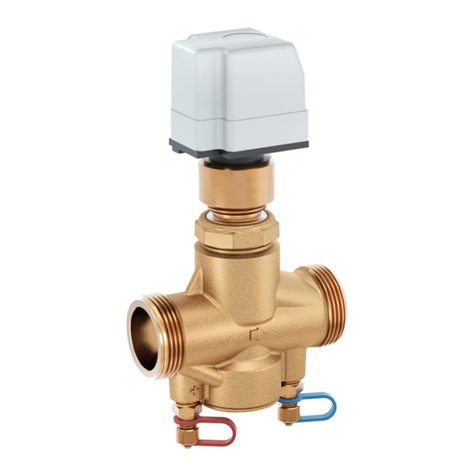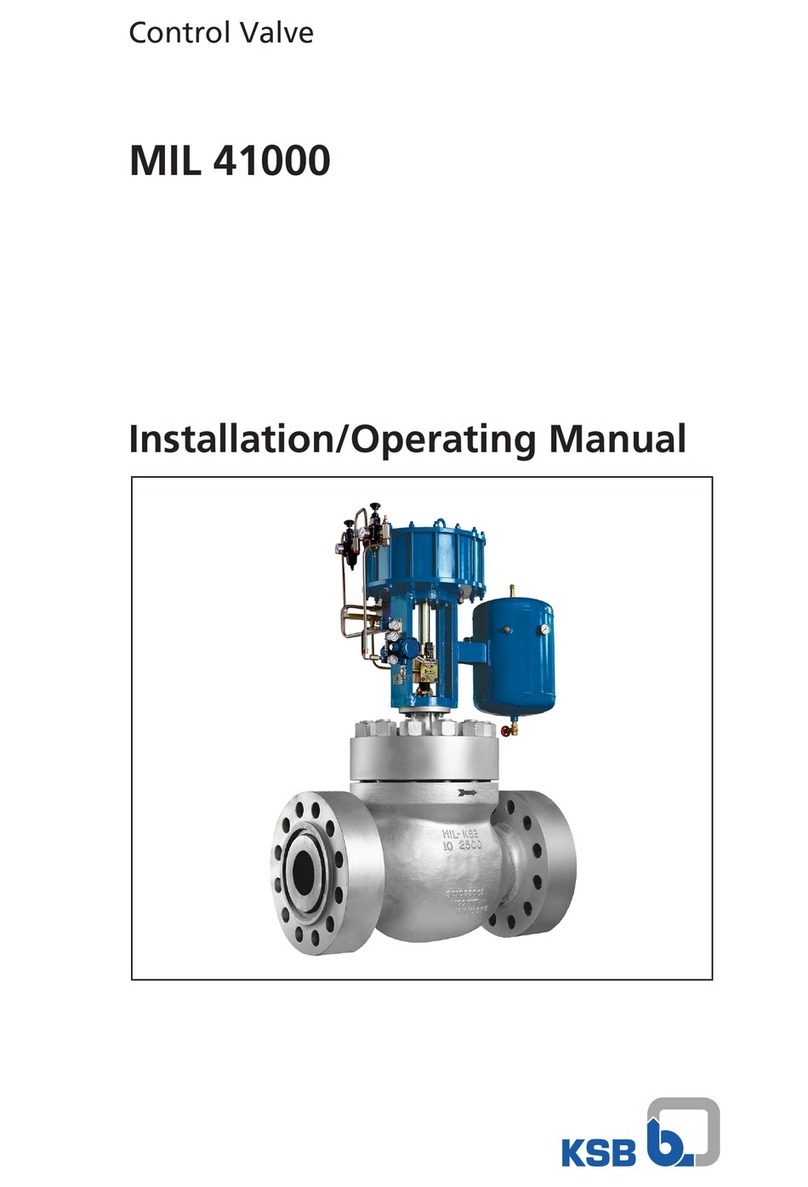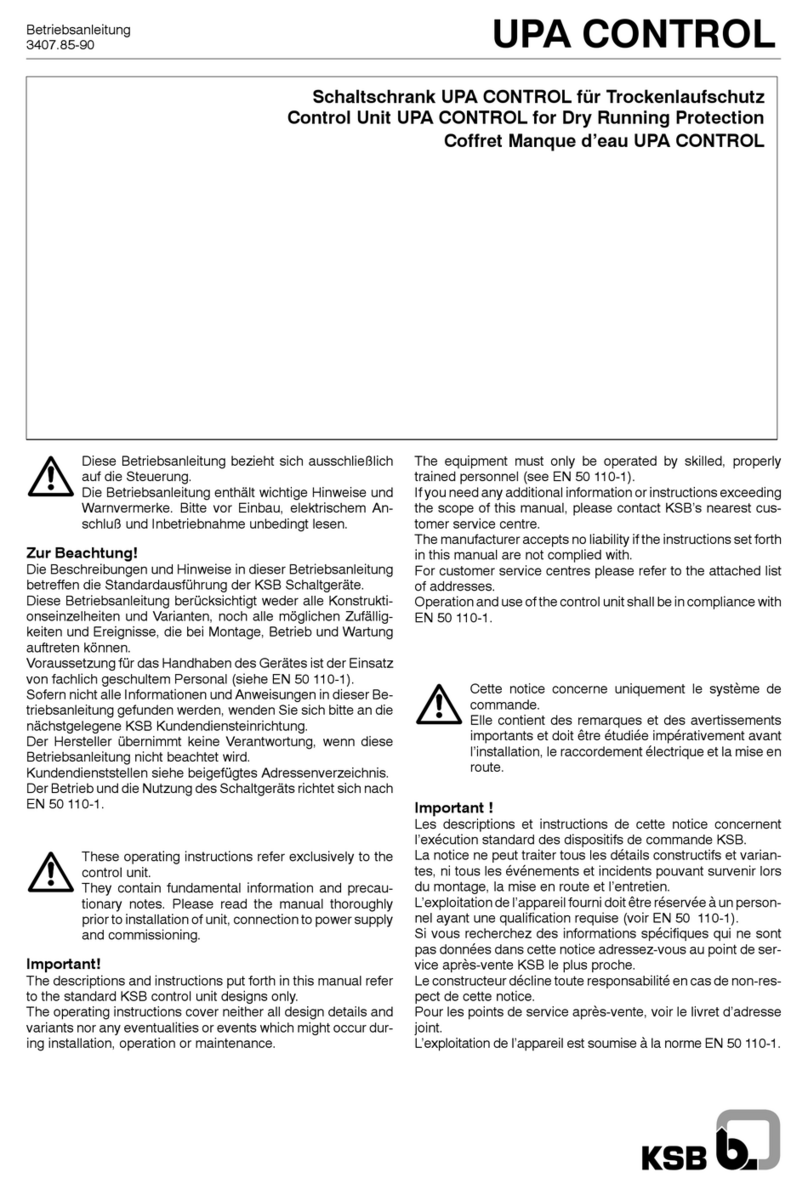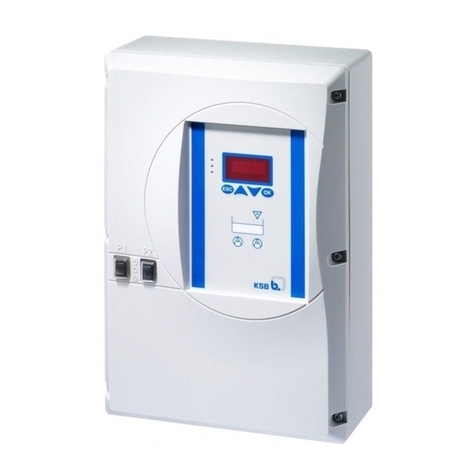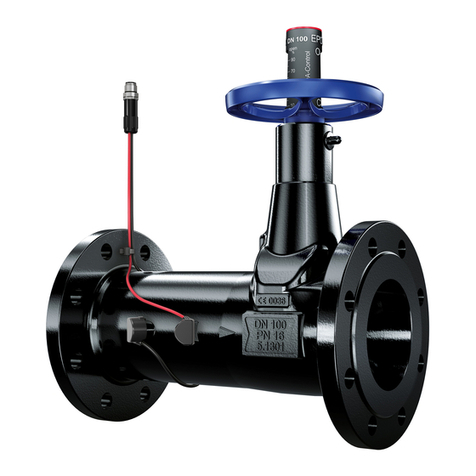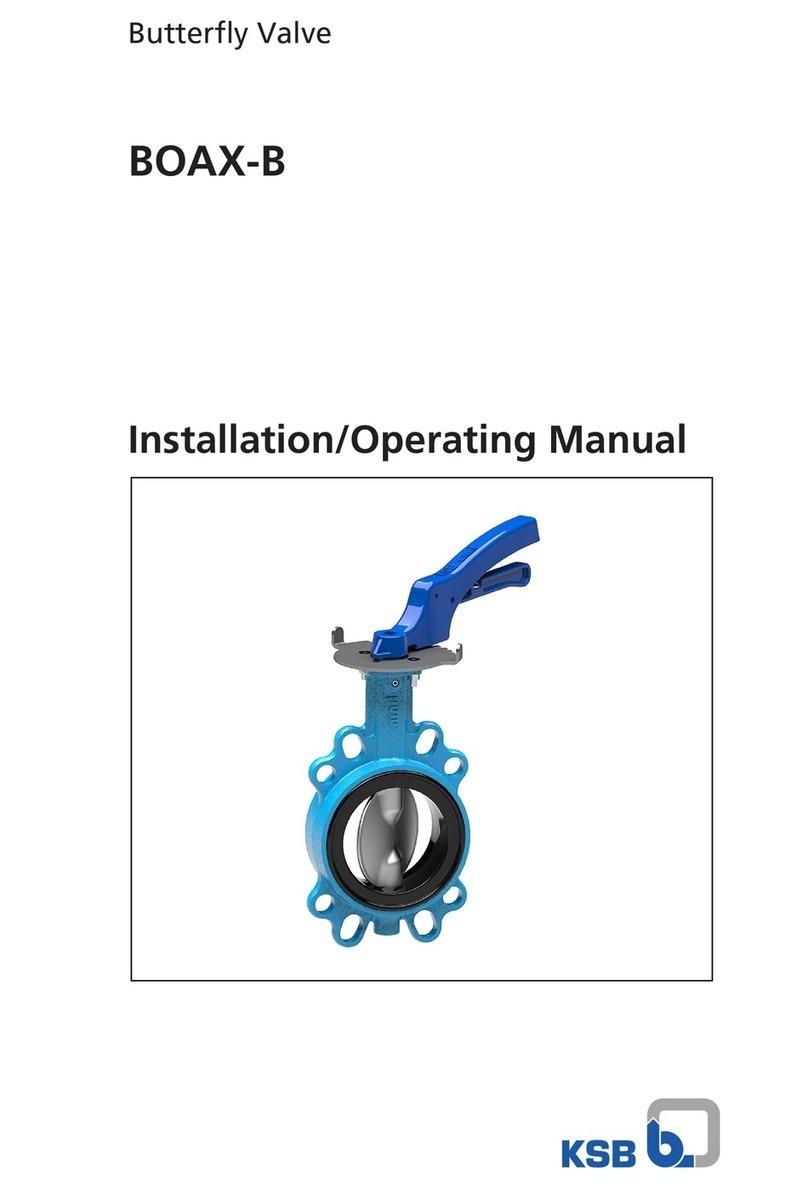
1. CIean body gasket surface areas.
2. Install a new seat ring gasket (16) and insert
seat ring (15) in the body.
Note : Gasket (16) is temporarily placed
to hold the seat ring during lapping. It is
imperative to use a new gasket or a test
part having the same geometrical
characteristics in order to insure the
correct position of the seat ring during
lapping.
This gasket (or similar part) can be kept after
lapping for future lapping purpose.
Caution: The gasket used for lapping
should not be reused for the body
reassembly.
3. Apply lapping compound at several spots
equally spaced around the seating area of
the seat ring.
4. Insert the cage (17) into the body (9A).
5. lnsert the stem and plug sub-assembly
carefully into the body until it is seated.
6. PIace bonnet (9B) on the body (9A).
Caution :Ensure that the seat ring (15),
cage (17) and bonnet (9B) are properly
aligned.
7. Fasten the bonnet to the body using four
body stud nuts (11) spaced equally apart.
Apply slight pressure and tighten evenly.
Caution : Do not tighten nuts to final
torque specifications at this time. The
bonnet is used temporarily for guiding
purposes only.
8. Insert two or three pieces of packing into
the packing box to assist in guiding the
stem and plug during lapping.
9. Screw a drilled and tapped rod with a T-
handle onto the plug stem and secure with
a locknut (see Figure 4).
Note : As an alternative, drill a hole
through a flat steel plate and fasten
to the plug stem using two locknuts.
10 . Apply slight pressure on the stem, and
rotate the stem in short oscillating strokes
(around 8 to 10 times). Repeat this step as
necessary.
Caution: Avoid over-lapping as this can
cause damage to the seating surface
rather than improve leakage
performance.
Note : The plug should be lifted and
turned 90° each time before repeating
Step (10). This intermittent lifting is
required to keep the plug and seat ring
concentric during lapping.
11. After completion of the lapping operation,
remove bonnet and internal parts. The
seating area of the seat ring and the plug
must be cleaned of all lapping compound
in preparation for reassembly.
7.3 PIug Stem Pinning
Plug stem pinning in the field may be
required for the following:
— Replacing of existing plug and stem, or
— Replacing of existing stem only
7.3.1 Replacing of Existing Plug and Stem
If it is necessary to replace the plug, then the
plug stem must be replaced at the same time.
The original pin hole in an existing stem will
not provide the necessary fit, and might
seriously impair the strength of the assembly.
A. Reference Marking on the Plug Stem
Measure the depth of the pilot recess in
the plug (Dimension X in Figure 5), and
make a reference mark on the plug stem at
the same distance from the thread.
Note: While pinning is being performed,
care must be taken not to damage the
seating surface or plug guide. Always
use a soft metal or plastic vice jaws with
cylindrical features to hold the plug
guide area (see Figure 5).
B. Screwing Stem to Plug
Hold the plug (with vise jaw assembly) in
a vise.
Lock two nuts against each other on the
end of the new plug stem, and screw the
stem solidly into the plug using a wrench
on the upper nut. When properly
assembled, the reference mark (see Section
A above) should be flushed with the end
6
